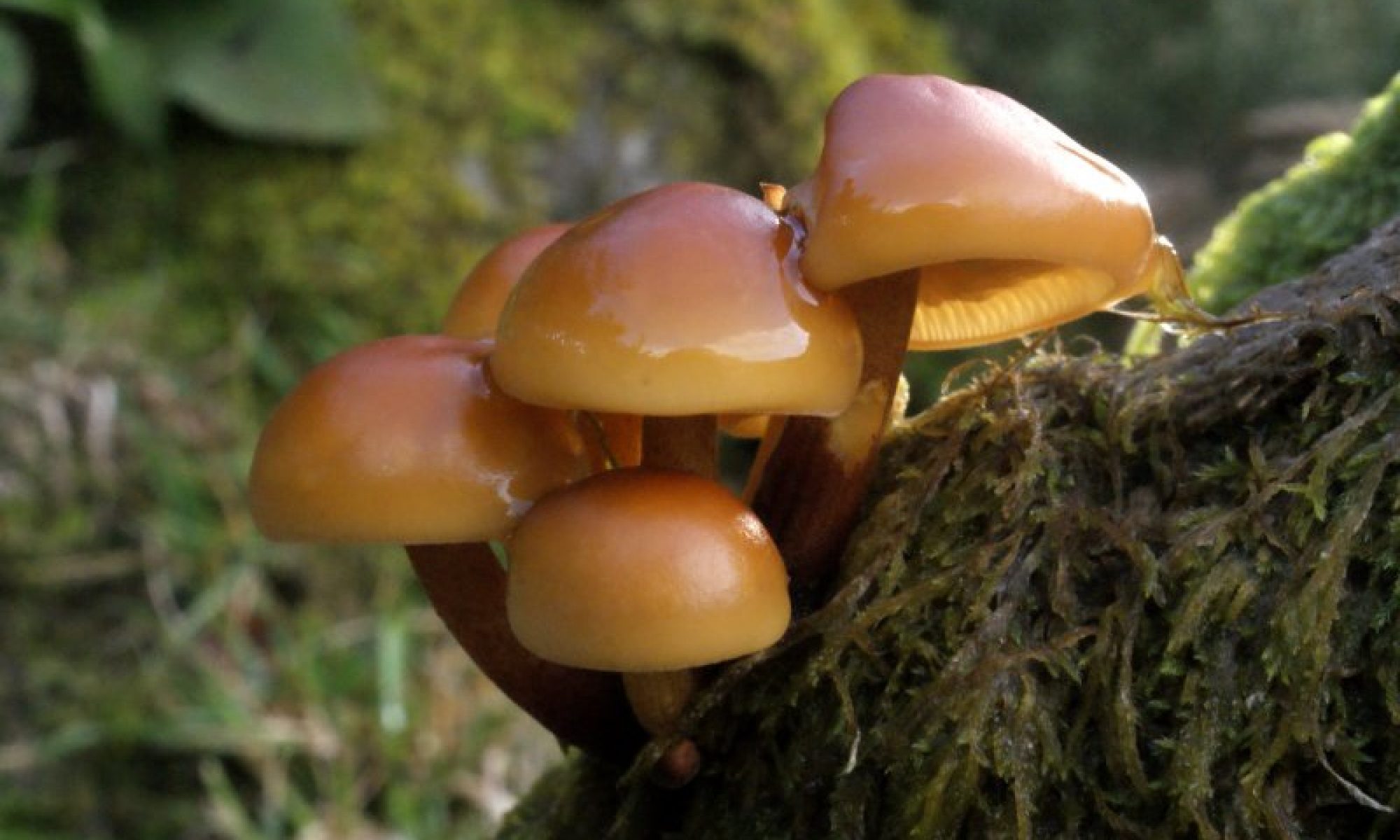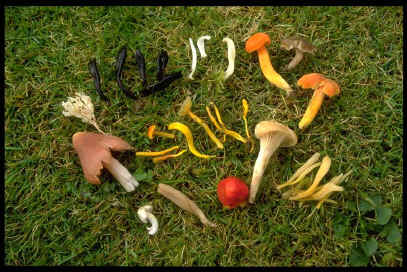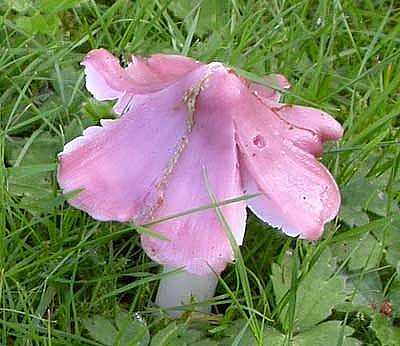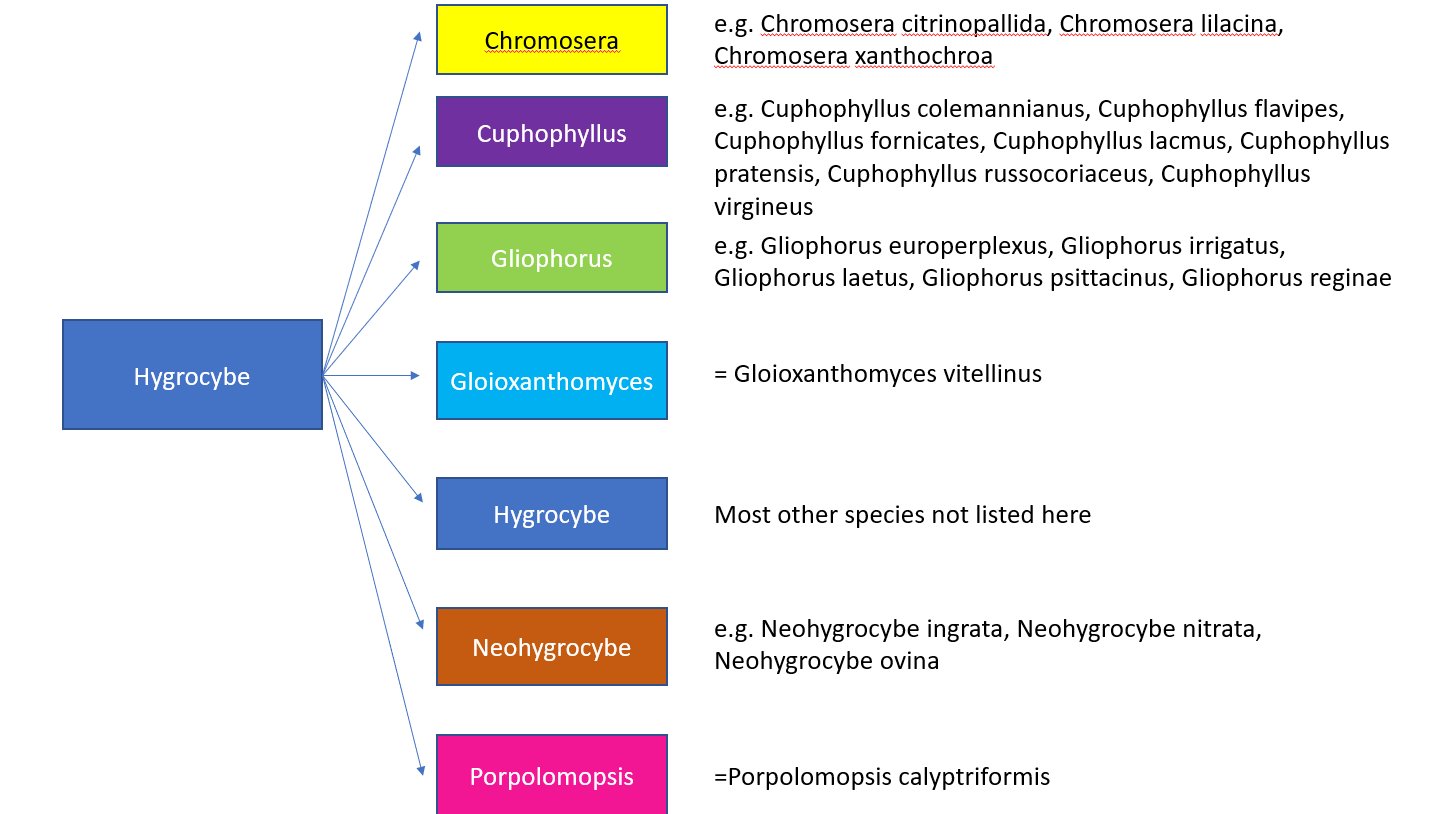Waxcaps have been described as the orchids of the world of fungi. They are often startling in colour from reds, oranges and yellows to whites and browns. They can smell of honey or less pleasantly rather nitrous. They are usually found in grasslands here in Ireland (although also in woods) and are one of the groups of grassland fungi that are now recognised as excellent indicators of ancient unfertilised grassland. Other grassland types are the Entolomas (pink spored gill fungi), the Clavarioids (coral fungi) and Geoglossums or Earth tongues. They can all be found in a range of grassland types from dunes to uplands, from lowlands to gardens. Indeed some of the best species like Hygrocybe calyptriformis (see photo below) are more often found in gardens than other grassland types. Hygrocybe calyptriformis is actually a Biodiversity Action Plan species so if you find this species in particular in your garden, please e-mail us – we want to know wherever you live whether it be Northern Ireland or not.
These species are sensitive to the application of artificial fertilisers, especially those containing phosphorus. It may take a considerable time for fertilised sites to be rehabilitated even if managed positively for nature conservation arguably making grassland fungi better indicators of ancient unfertilised grasslands than higher plants.
The latest paper on waxcap nutrition is “Isotopic evidence of biotrophy and unusual nitrogen nutrition in soil-dwelling Hygrophoraceae” by Halbwachs et al (2018) . It’s a fascinating read. Waxcaps (and fairy clubs) have long been known to have an odd stable isotope profile suggesting they are not saprotrophs but more like ectomycorrhizal fungi. They have been found colonising the root hairs of plantains and there are even possible links (Hygrocybe lacmus) with heather. These links are described as ‘mycorrhizal like’ or ‘endophytic’ as the benefit to the plant has not yet been shown (like the link some Cortinarius species can make with sedges). They form relationships with mosses but these stable isotope profiles are different and not as common suggesting the links are more with grassland plants (herbs maybe rather than grasses). Adding moss killers to experimental plots did not affect waxcap fruiting. Looking at the woodland occurrences of Hygrocybe in other parts of the world, they say that these are often in woods where ectomycorrhizals are not as dominant suggesting that the reason that they are not more common in European woods is that they are out-competed there by ectomycorrhizals. They also suggest that they could derive some of their nutrition from soil invertebrates like Laccaria laccata is known to do.
Another amazing statistic is that DNA work has shown that waxcaps and clavariods make up as much as 40-70% of the fungal biomass in undisturbed grasslands. It all makes you realise how little we know of what is happening down there.
Assessing site quality from fungal data
The British Mycological Society instigated a Waxcap survey in 1996 and this instigated a lot of interest in surveying waxcap sites. Sites can be ranked based on the number of species of Hygrocybe or additionally using a weighted scoring system, sites with few visits but good species can be highlighted for further survey. See also the paper “The Fungi of Irish Grasslands and their value for nature conservation” by Roland McHugh, David Mitchel, Mark Wright and Roy Anderson in Biology and Environment, Vol 101B, No.3, 225-242 (2001).
The article in Biology and Environment lists the sites known in Ireland at that time. The more detailed page about Waxcaps in Ireland and Wales here will offer the most up to date site rankings of Irish and Welsh grassland fungi.
See the Atlas for more details on the distribution of these species in Northern Ireland or the Photo Gallery for images of these species.
More interesting web links about Waxcaps
- Irish Waxcap Survey Report Downloads
- Clare Island Survey – Fungi. For info on the book about Plants and Fungi (mainly waxcaps) of Clare Island
- A website devoted to waxcaps in the UK has been set up by the University of Aberystwyth. Click here to see it. This website includes an extensive list of articles for download about waxcaps.
- SSSI Designation Guidelines – Chapter 18 – Fungi (published 2018)
- DNA barcoding helping in SSSI designation for waxcaps in England
- Waxcap site assessment in England report
- Plantlife have produced a leaflet on managing grassland fungi. Click here to download the document.
- DEFRA report on Systematics, Barcoding and Ecology of Fungi from Waxcap Grasslands
- For some more information on Hygrocybe vitellina, click here.
Taxonomy changes to the genus Hygrocybe
Recent DNA work has transformed the genus Hygrocybe and it can be difficult to remember names now! This is a diagram of how the genus has been split and what species have gone where.



